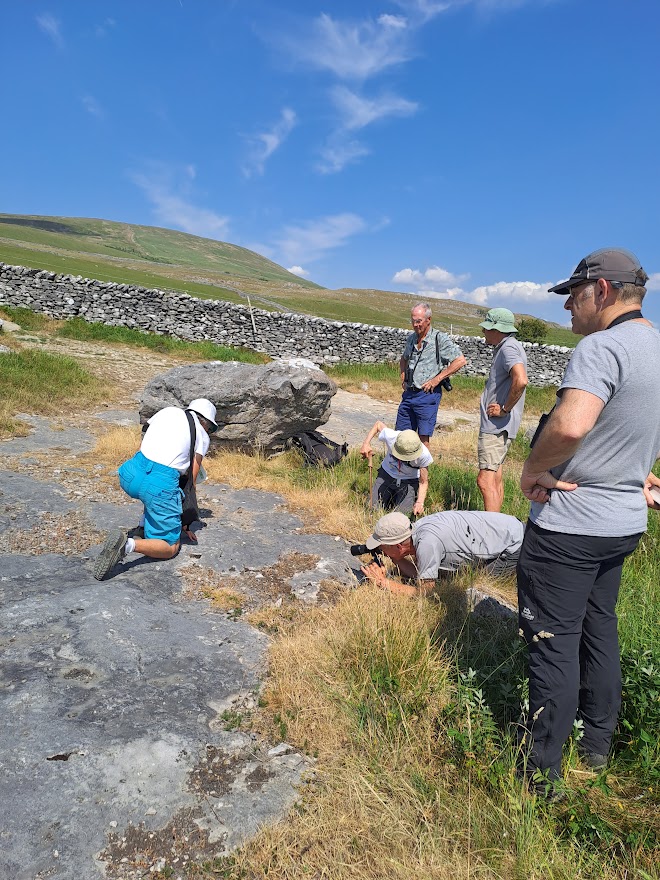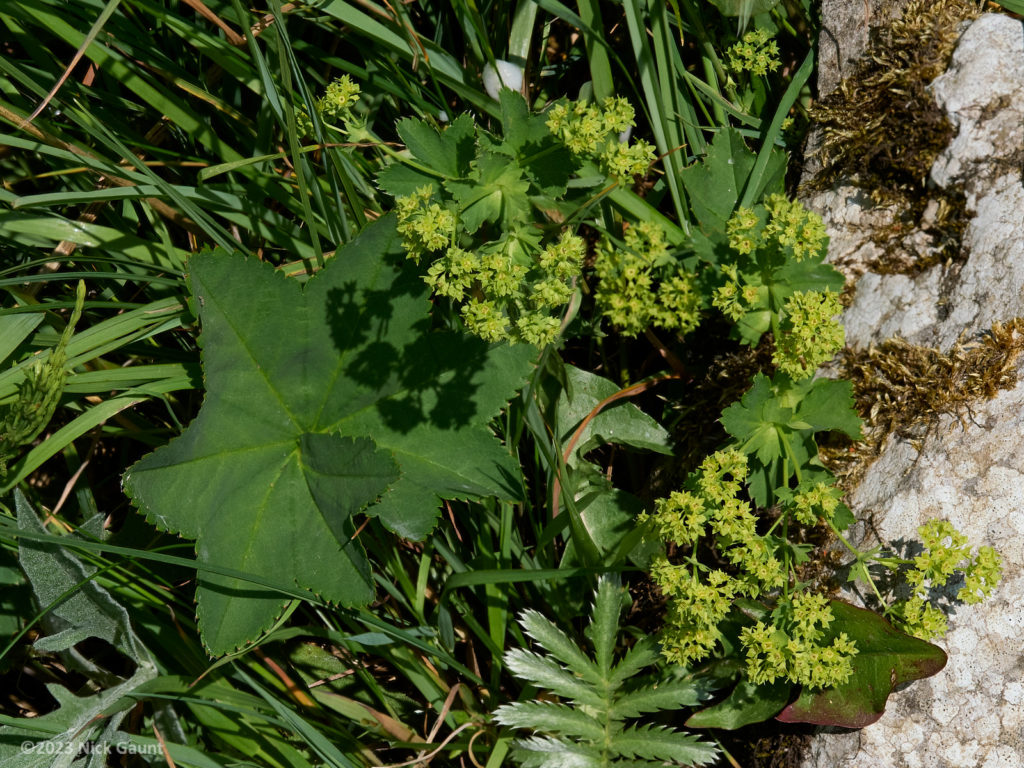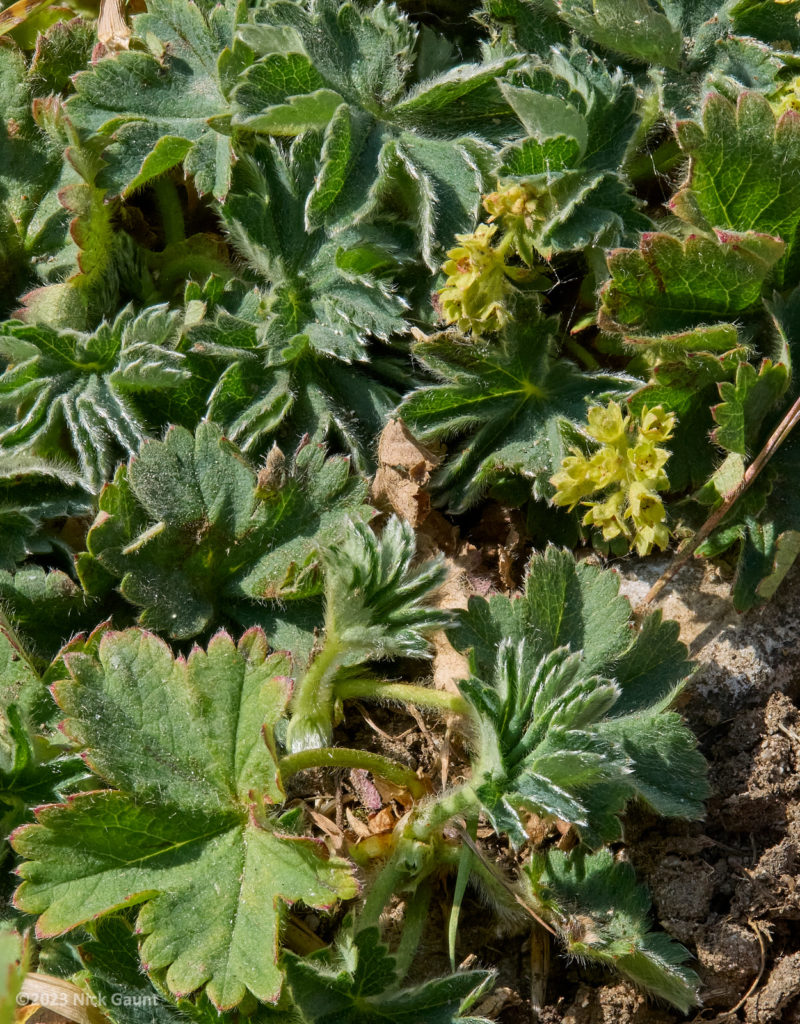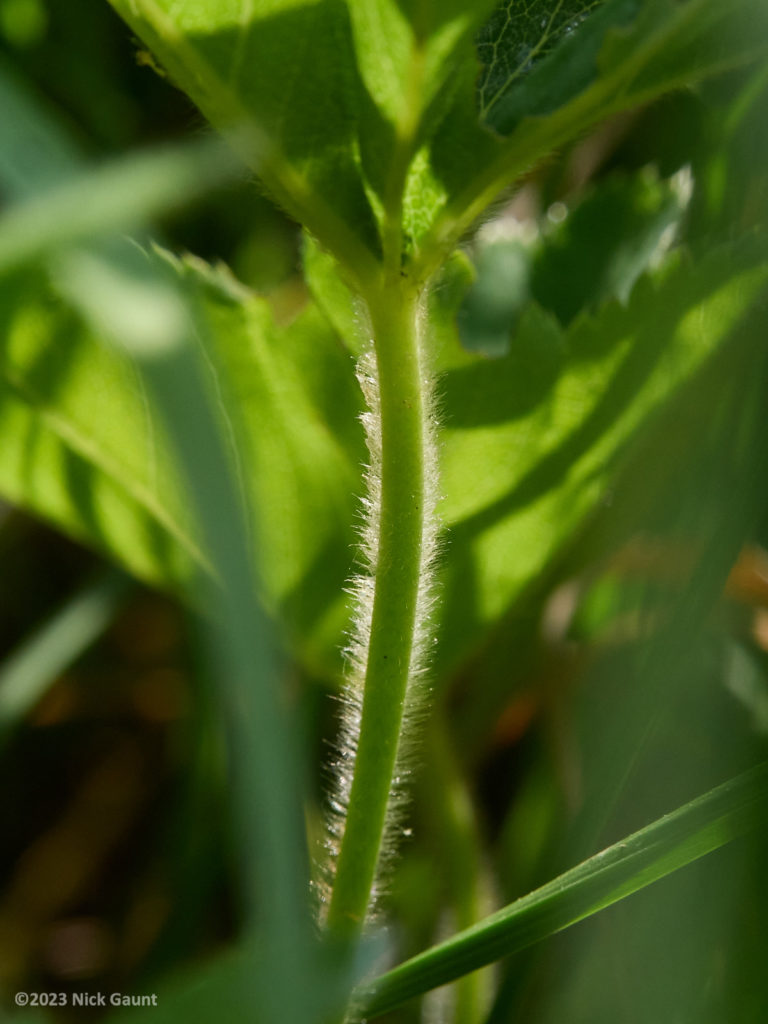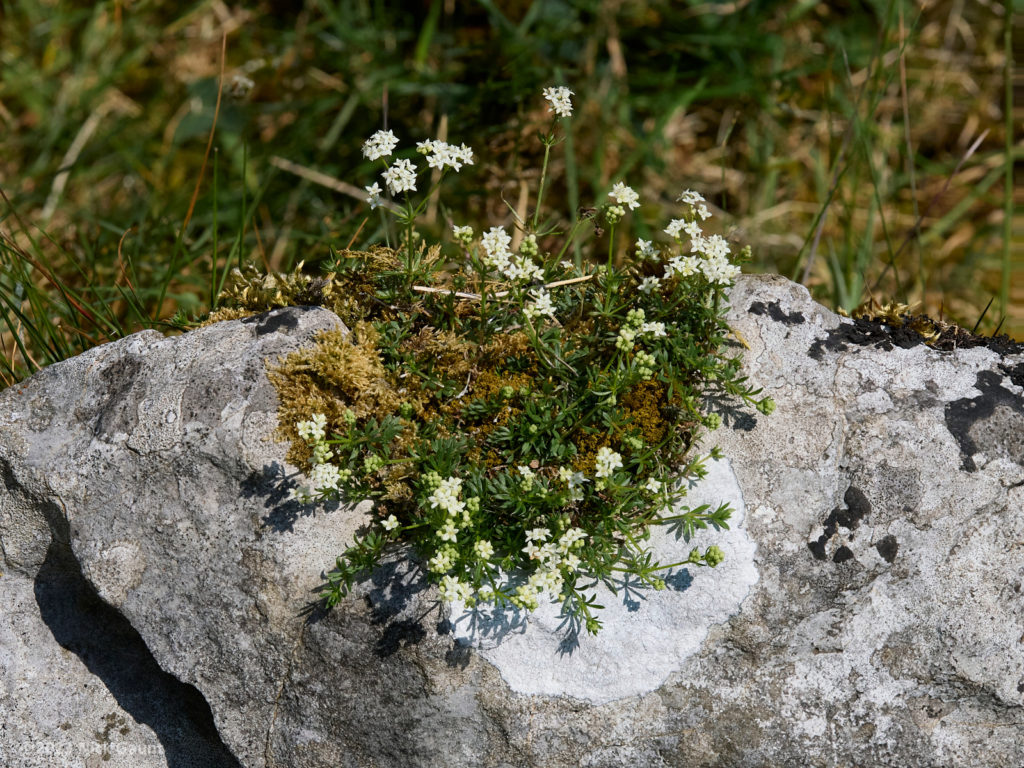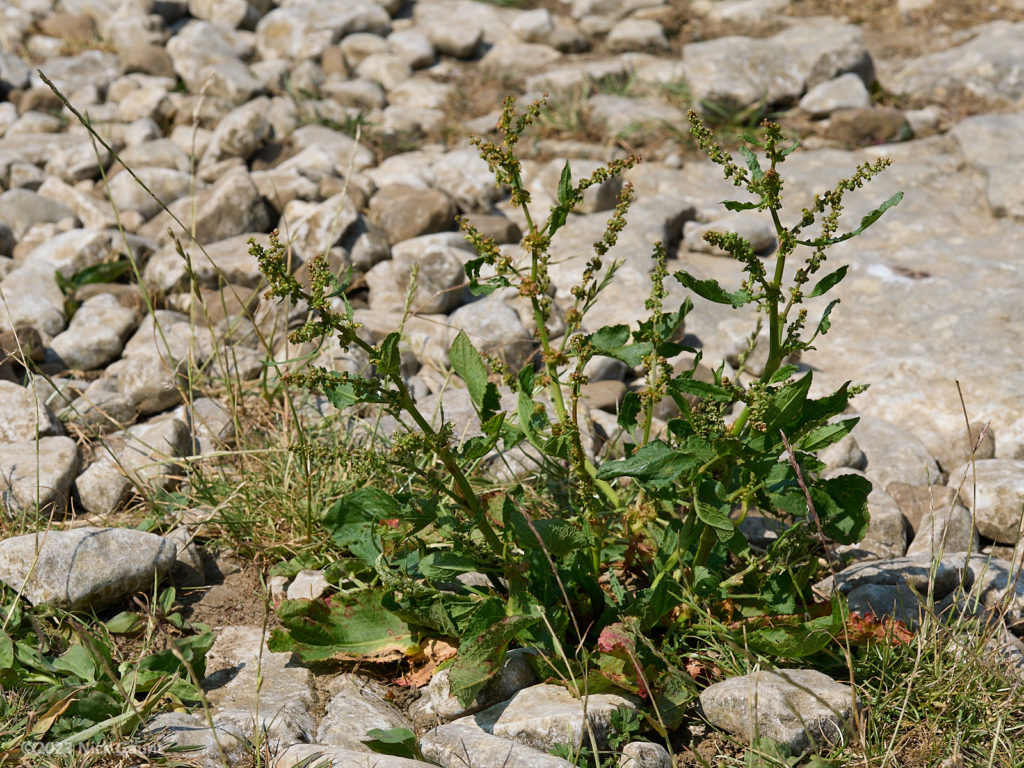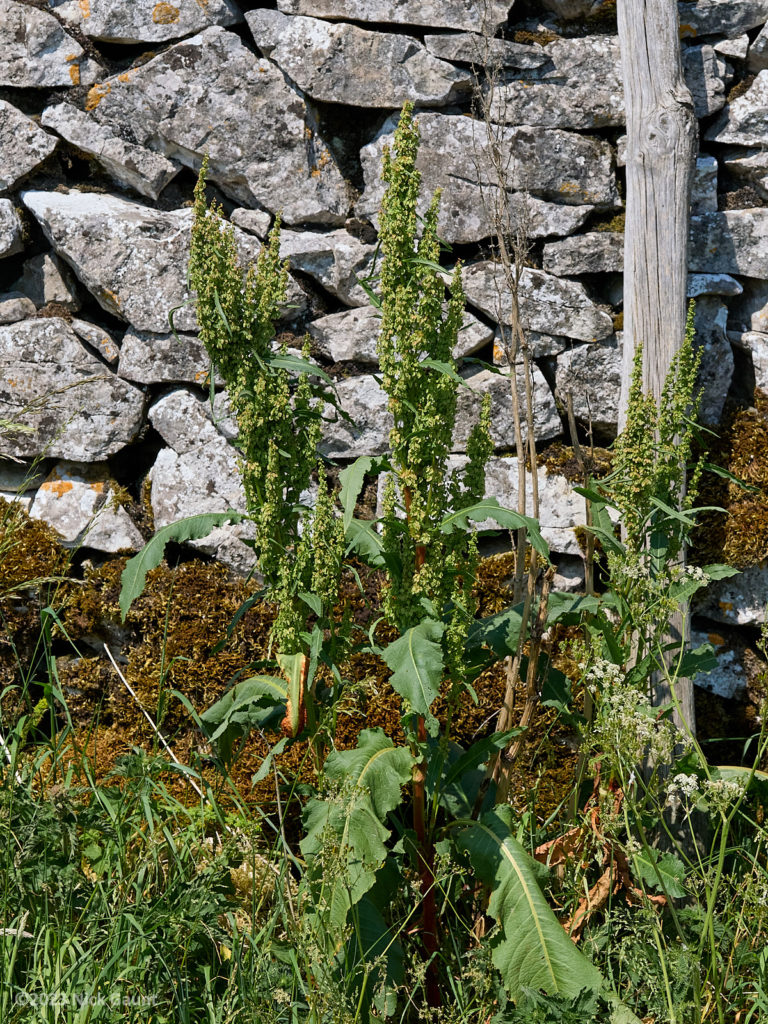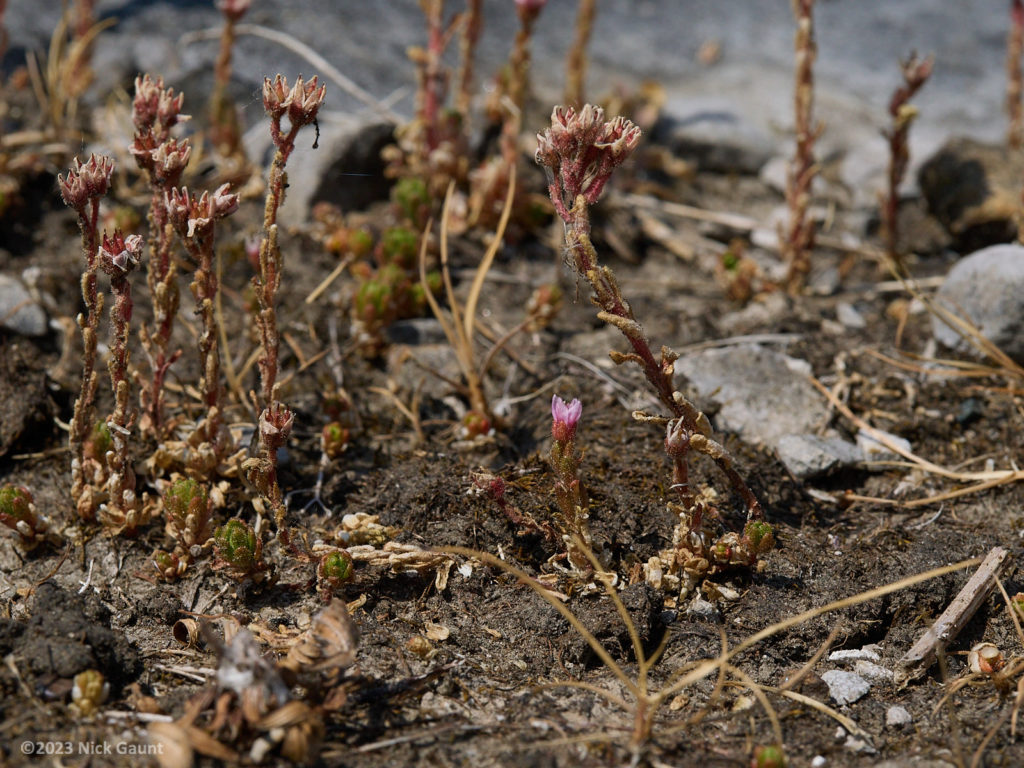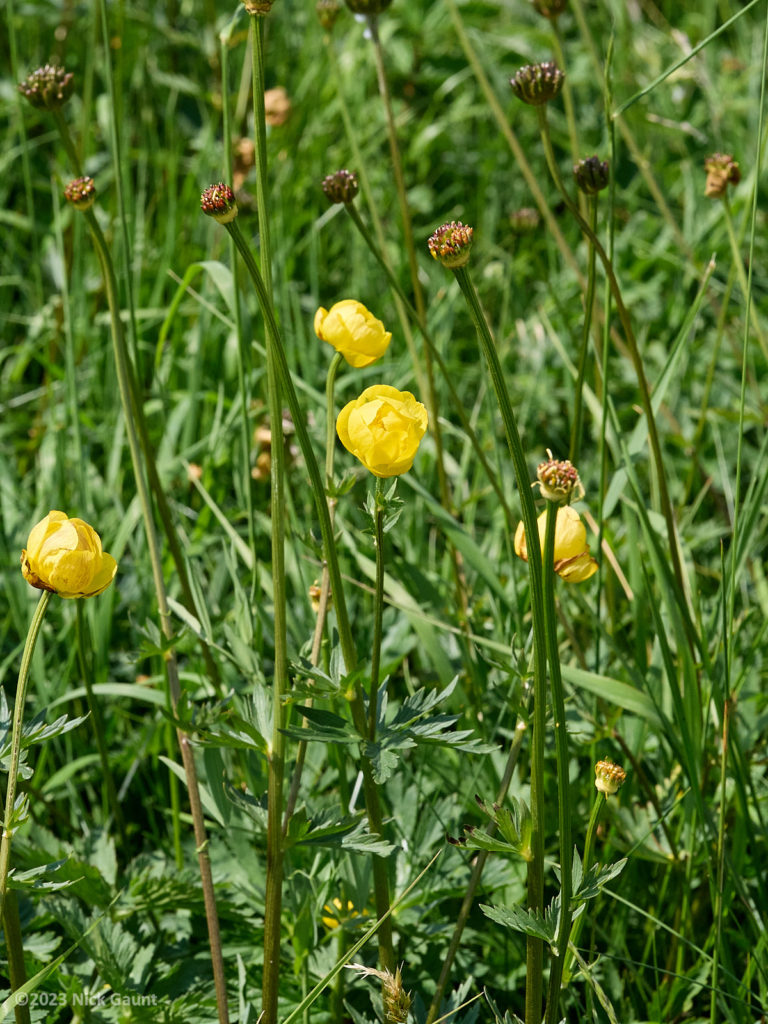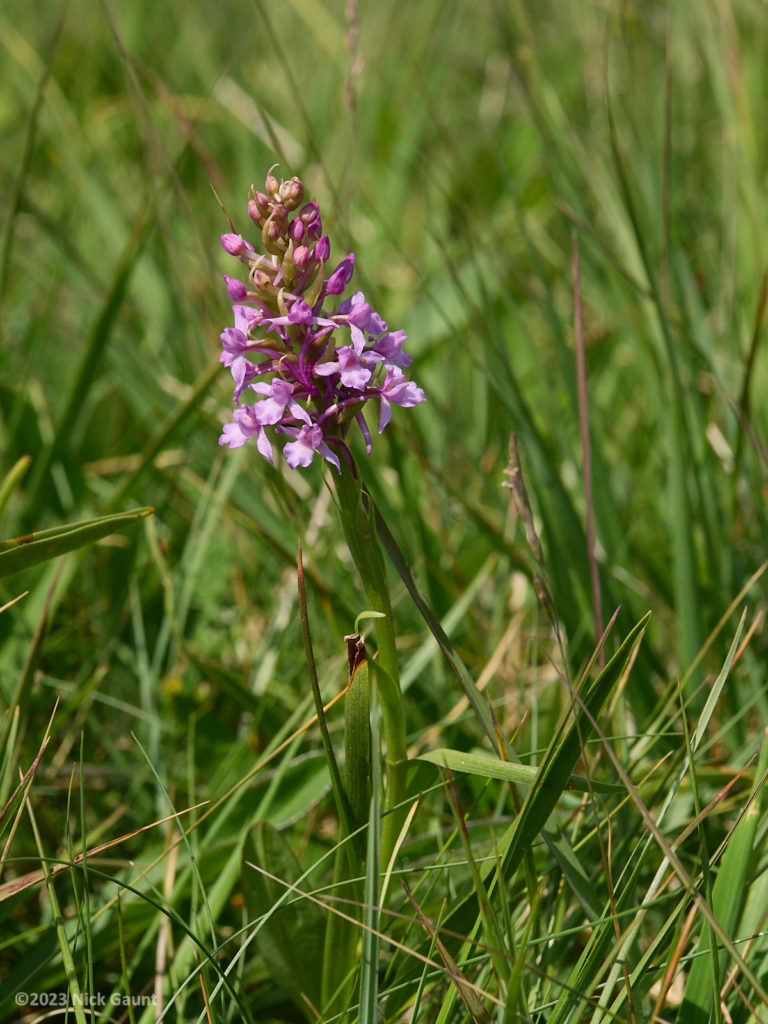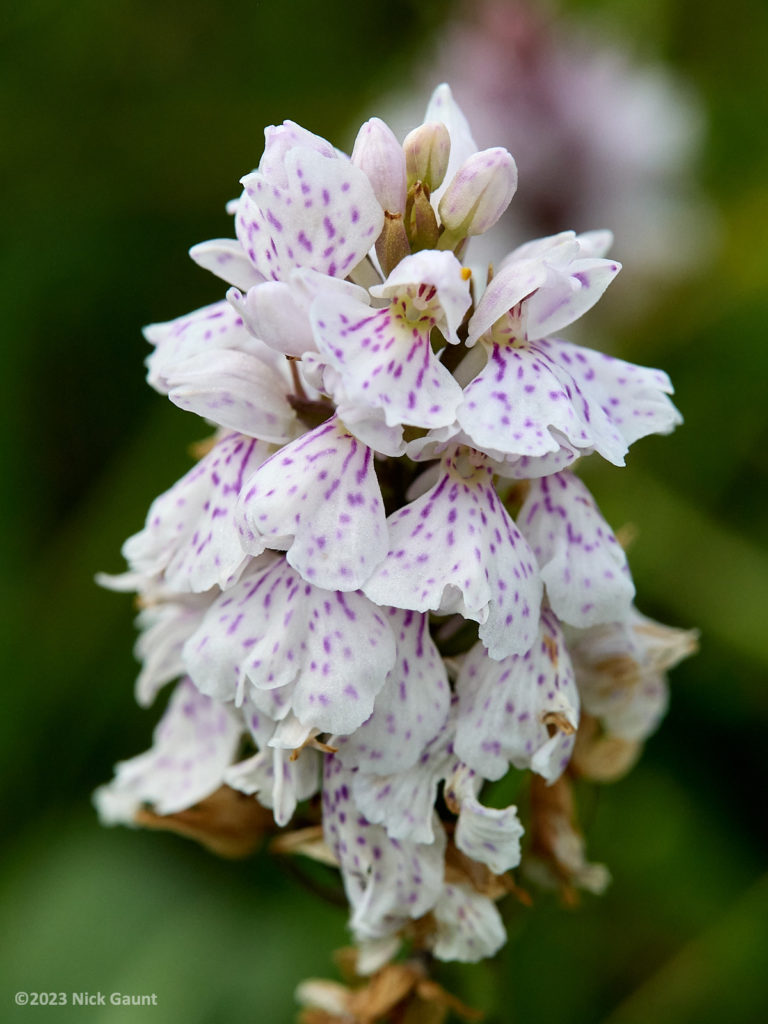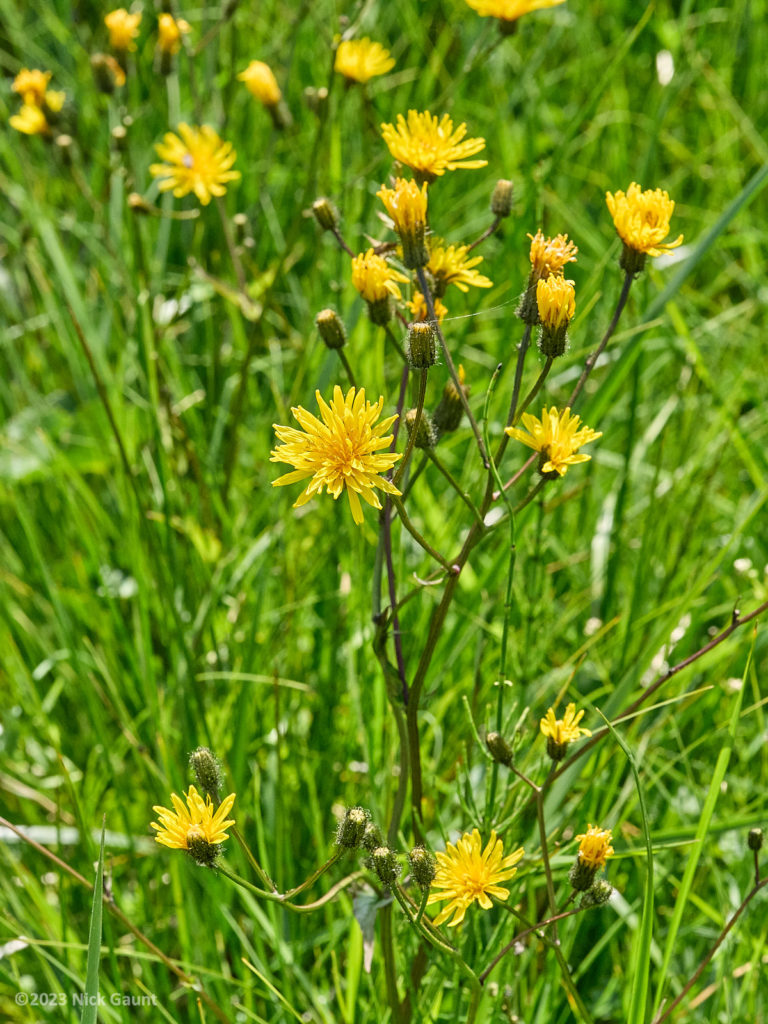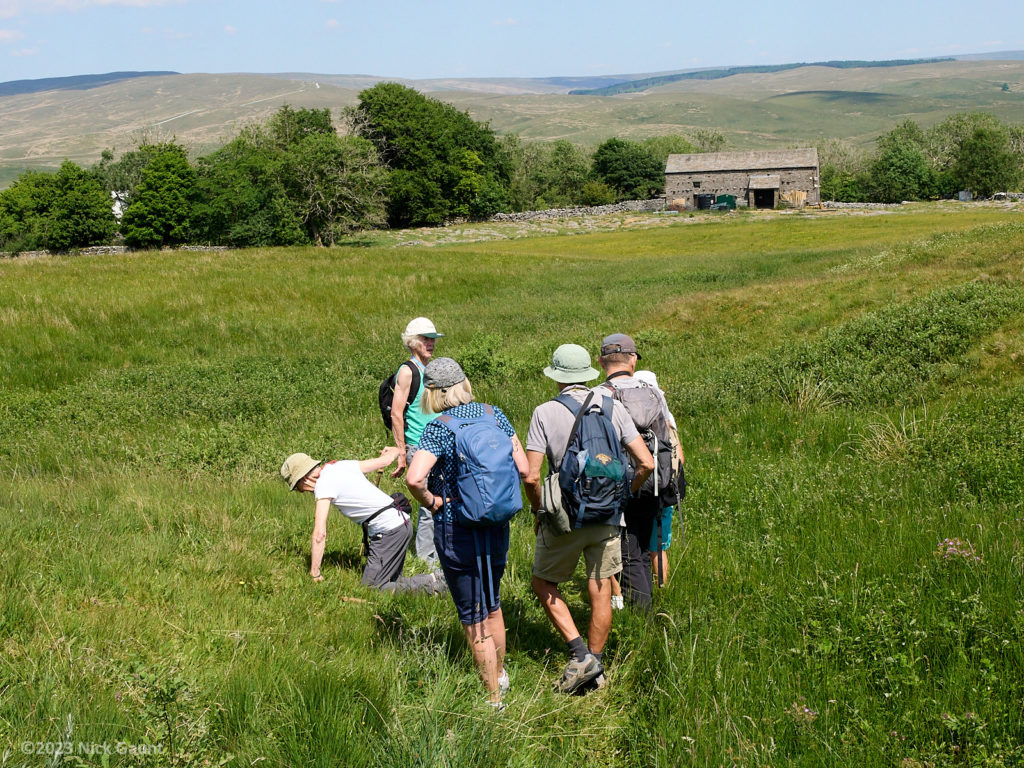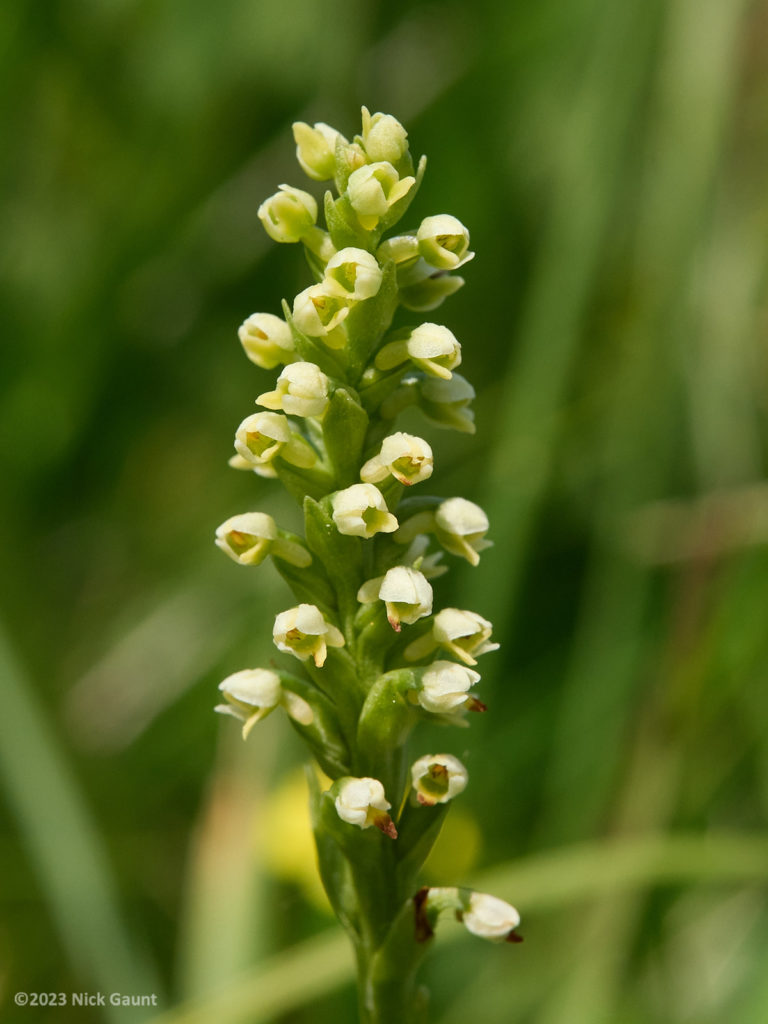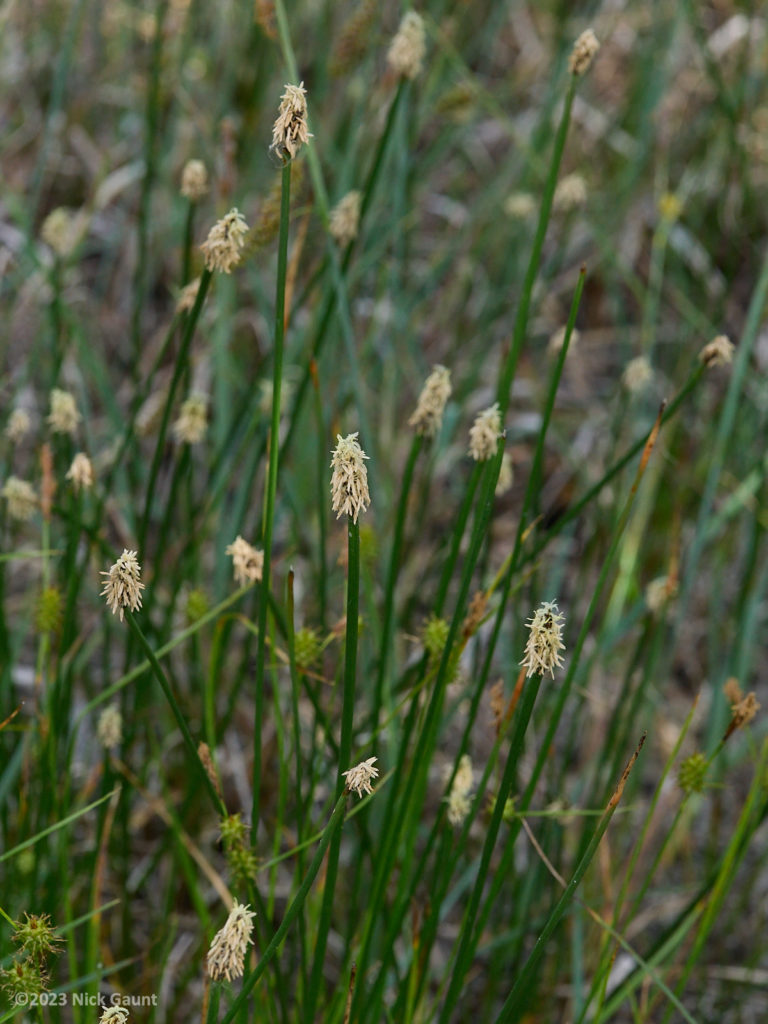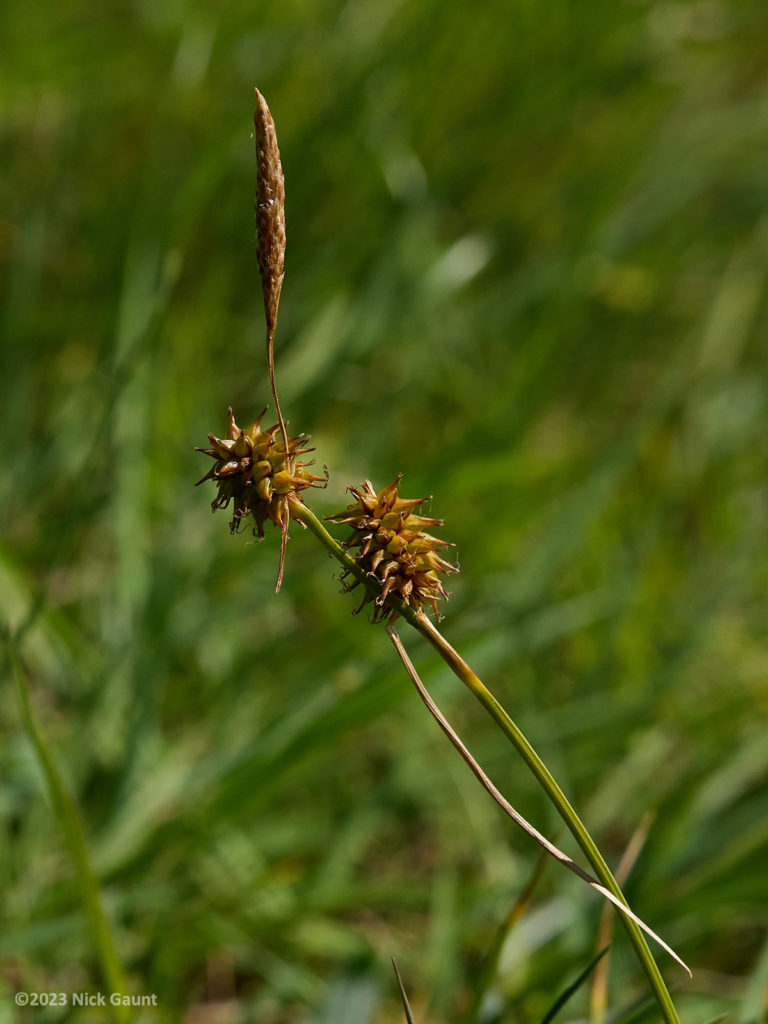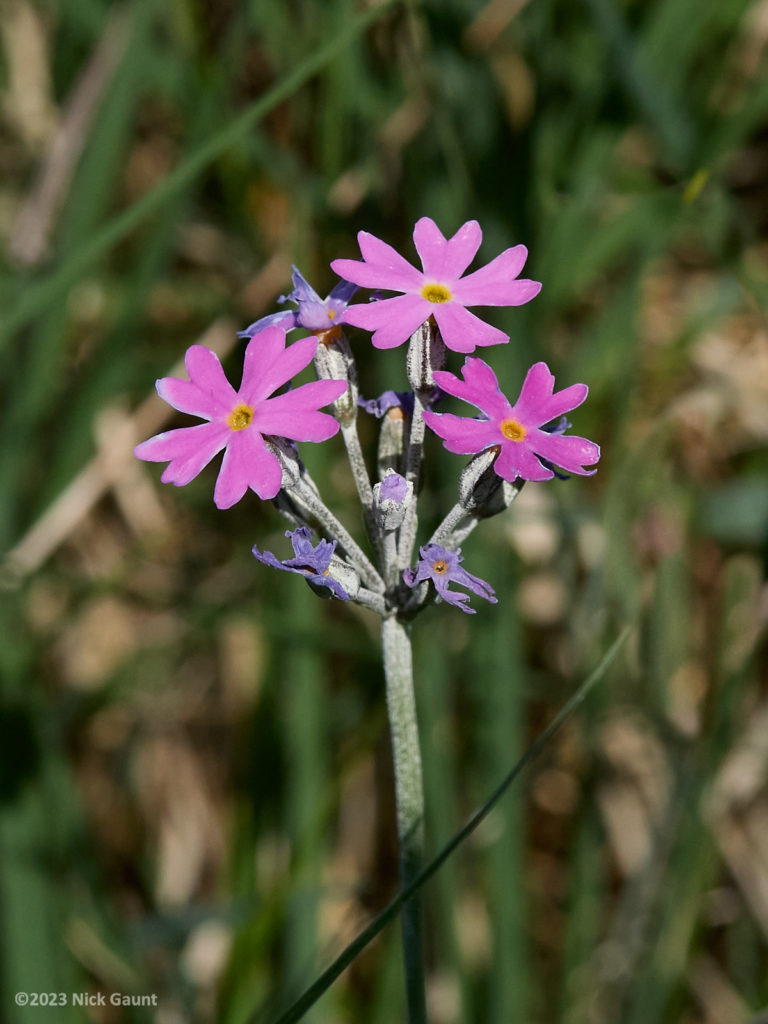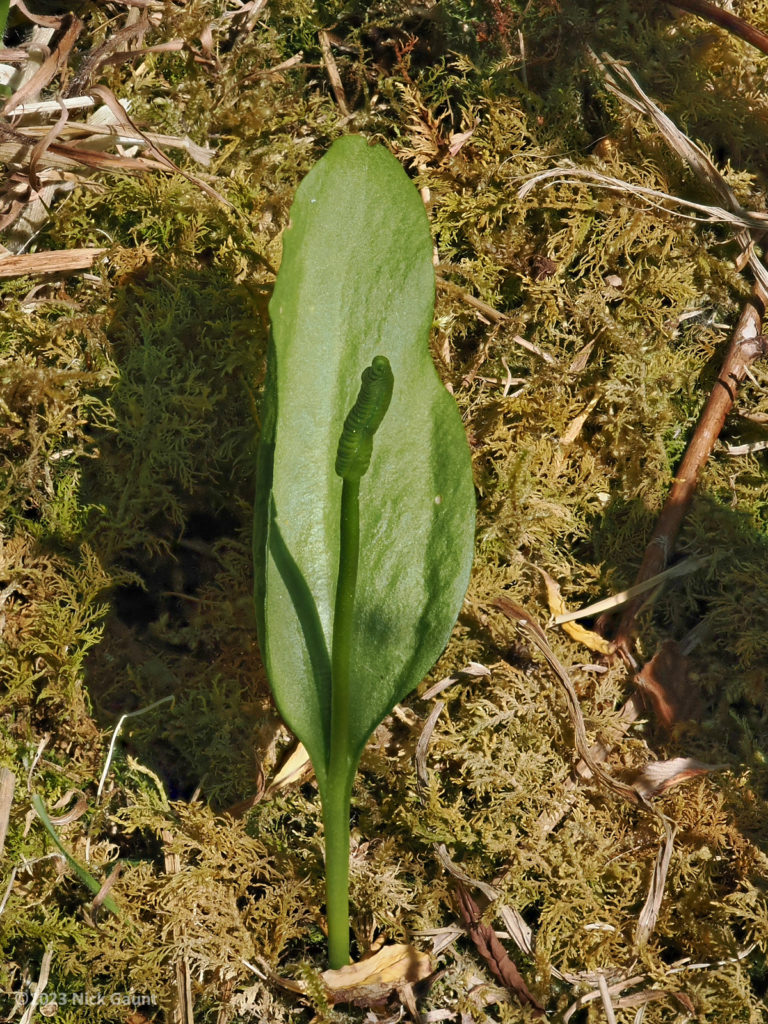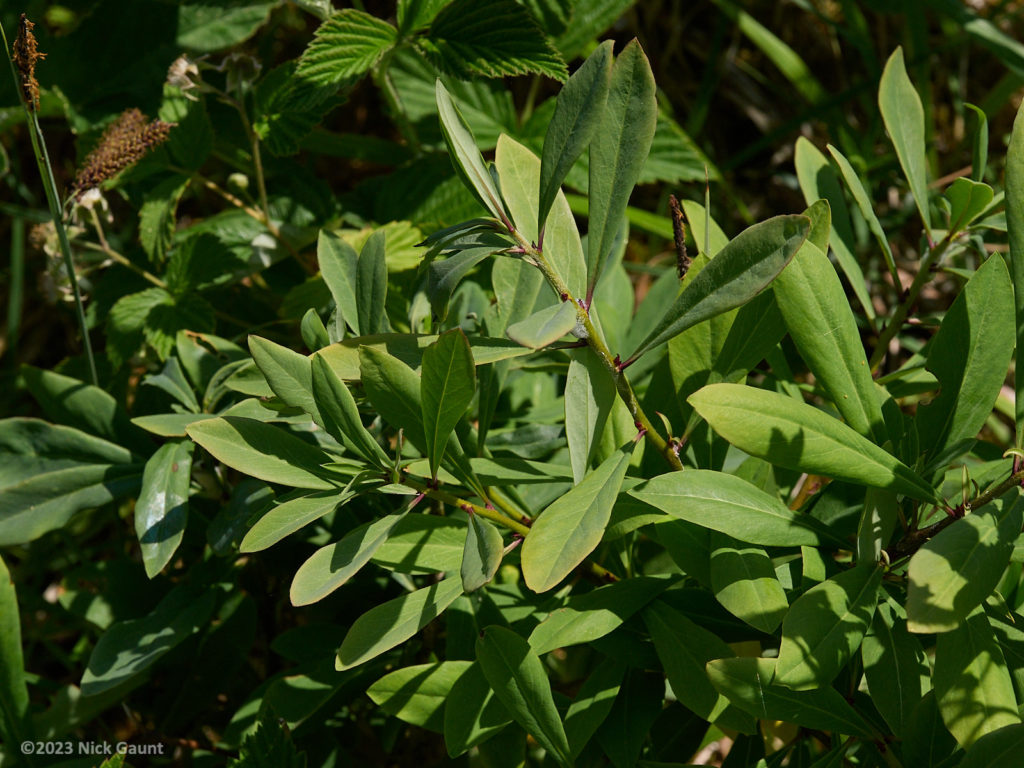Leader: Kevin Walker
This event was advertised as a chance to see “rare limestone plants” and did not disappoint! Apparently some 90% of the British Flora can be found on the slopes of Ingleborough, and although our target was more modest we did end up with a longer list than ever before. Only a few of the highlights will be mentioned here, for the full list see the link at the end.
Ingleborough and the Yorkshire Dales have a rich flora because of the underlying limestone rock. A particular characteristic of the area is the limestone pavement which has been sculpted by glaciation – 36% of the country’s pavement is found in the Yorkshire Dales National Park. The clints and grikes which make it up provide a unique habitat and many rare plants are associated with this formation.
The 8 HDNS members met up at Selside on a perfect sunny day. We started on a dry, stony track which looked particularly unpromising floristically, but within seconds Kevin was showing us the various species of Alchemilla which grow there, and how to distinguish them. This is a technical matter involving hairs, teeth, leaf shape… There are about 15 of these apomictic species just in the UK! We found several other interesting species along the track – including Limestone Bedstraw, Clustered and Northern Dock, but it was obvious that the extreme drought was affecting the plants. When we reached a large flat limestone slab Kevin showed us a small upright stonecrop growing in the cracks – this is Hairy Stonecrop, rare and local, and was only saved at this spot by the resourcefulness of the warden who one day got tired of seeing all the cavers parking their cars on the slab and placed a very large rock in the way!
We next made a foray into an overgrown rocky coppice in search of Mezereon but this yielded only Dog’s Mercury, horseflies and nettles – plus a female Ghost Moth.
So we moved up the road to Colt Park and had lunch in the shade on mossy boulders overlooked by Brittle Bladder-fern and Hard Shield-fern. On the vegetated limestone pavement at the start of Colt Park Wood we found Mossy Saxifrage then passed through the Natural England buildings to the meadow behind – a sloping hillside with a wet flush running through it, the whole covered in a colourful array of typical upland meadow flowers – Ragged Robin, Pignut, Rough Hawkbit, Heath Spotted- and Common Spotted-orchids, buttercups, Globeflower, – until we reached a small mound where we all reverently crouched down to admire the rare and elusive Small-white Orchid. There was a healthy sprinkling of these plants, in amongst Betony, Marsh Hawk’s-beard, Heath Fragrant Orchid and against a background of flowering meadow grasses and nodding sedges.
We then had just enough time to visit Salt Lake Quarry; the steep shaded rocky walls sheltered several fern species, including the rare Rigid Buckler. The bottom of the quarry is normally wet but had completely dried out, though there was still a flourishing population of Northern Spike-rushes; the whole site was sprinkled with Bird’s-eye Primroses mostly having finished flowering, and a forest of Long-stalked Yellow-sedge – the one with the female flowers which point downwards! And at last Jack located the Mezereon which even had a few berries and, best of all, was sheltering Adder’s-tongue Fern at its base.
A day of botanical riches indeed. Many thanks to Kevin, without whom we would neither have found nor identified the majority of these special plants!
Muff Upsall
